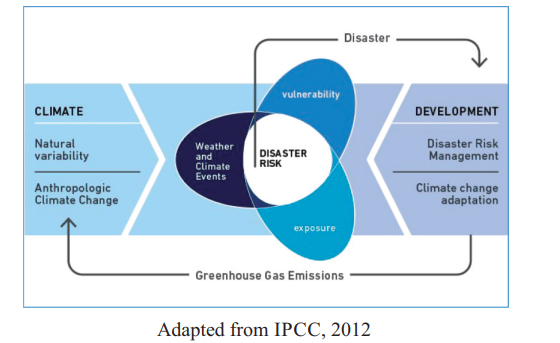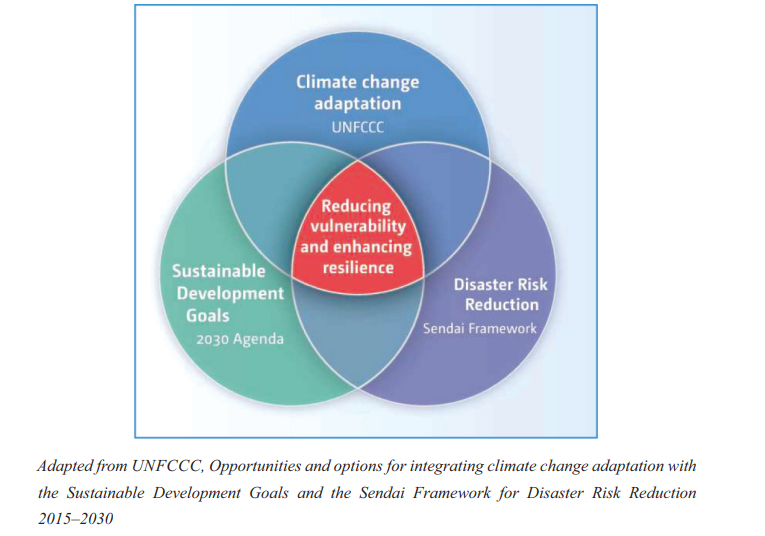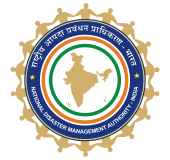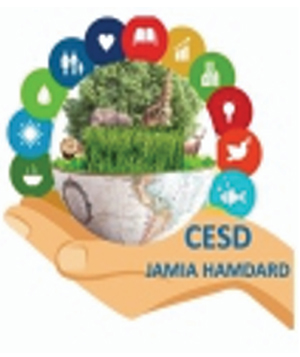CLIMATE-DISASTER NEXUS
The nexus between climate change and disasters was not appreciated much until the beginning of this millennium. Throughout the twentieth century, environmental degradation and disasters were largely seen as isolated incidents. The key global initiatives since the seventies – the Stockholm Conference on Human Environment in 1972, the Brundtland Report of 1987 that introduced the concept of sustainable development, the Rio Earth Summit of 1992 that adopted the UN Framework Convention on Climate Change (UNFCCC), and the first three Assessment Reports of Intergovernmental Panel on Climate Change (IPCC) – could neither anticipate nor project the emerging nexus of climate change and disasters. It goes largely to the credit of the IPCC Fourth Assessment Report of 2007 to present strong scientific evidences to unravel this nexus as a matter of key global concern. This was followed by the Special Report of IPCC on Managing the Risks of Extreme Events and disasters to Advance Climate Change Adaptation in 2012 which reiterated this nexus in a most comprehensive manner.

Likewise, disaster risk management was largely response-oriented and lacked a forward-looking approach for risk reduction. The International Decade on Natural Disaster Reduction (1990-99) made a beginning in this direction, setting the stage for Yokohama Strategy for a Safer World (1994) to be followed by the Hyogo Framework of Action: Building Resilience of Countries and Communities to Disasters (2005), but the nexus of climate change and disasters was not flagged as the key issue of global and local concern.
IPCC reports of 2007 and 2012 triggered discussion on climate-disaster nexus both within the climate change and disaster management communities at global, regional, national and local levels, raising demands for policy and strategic interventions for integration of Climate Change Adaptation (CCA) with Disaster Risk Reduction (DRR) to have a synergic and coordinated for approach for addressing the challenges. Various regional associations and national governments adopted programs, projects and activities to promote such integration.
1UNDRR and CRED, The human cost of disasters: an overview of the last 20 years (2000-2019)
MOMENTUM AND SETBACKS
These initiatives gained momentum in 2015 when several global frameworks on climate change, sustainable development, urban development and disaster risk reduction were developed. These include the Paris Agreement on Climate Change, the Sustainable Development Goals (SDGs) for Transforming the World, the Sendai Framework on Disaster Risk Reduction (SFDRR) and the New Urban Agenda, and the Hon’ble Prime Minister Shri. Narendra Modi Ji Ten Point Agenda on DRR.

Adecade has passed since the adoption of these global frameworks and agendas for action, with some success and more failure. The two yearlong pandemic of COVID-19 that affected every country and community throughout the world provided a huge setback. The Post-Covid world has seen countries making desperate attempts to recover from the economic losses during the pandemic and its aftermath and losing interests in climate change. The developed countries did not fulfil their commitments to contribute USD 100 billion annually to the developing countries. Countries pledged their Nationally Determined Contributions to climate change, but all these pledges put together only ensures that global average temperature crosses much beyond the Paris Agreement redline of below 2 °C, preferably 1.5 °C above pre-industrial levels. 2Some gains were achieved in the creation of much awaited Loss and Damage
2UNEP, Emission Gap Report, 2023
Fund for compensating for the irreparable losses, but pledges for the fund were too minimal to address even the fringe areas of damage and losses that are beyond redemption in most of the vulnerable small island developing countries. Overwhelming majority of the countries preferred not to submit their progress reports on achieving the goals and targets of SFDRR.
With just five years left of the 2030 deadline, the world's progress on the SDGs has remained dismal. Only 17% of SDG targets are currently on track to be achieved by 2030. Progress has stalled globally, especially in areas like poverty reduction, food security, climate action, DRR and peace-building.3
The mid-term review of the Sendai Framework expressed deep concern at the slow and unequal pace of implementation. Insufficient access to disaster data, risk knowledge, technology and financing, as well as insufficient prioritization and action on disaster risk reduction, including through climate action, continue to hinder progress in implementing the Sendai Framework.4
The track record of implementation of New Urban Agenda, 2016 has been even worse. Many countries have not even submitted progress reports; developed economies, in particular, have shown least engagement in reporting efforts, with the result that decadal progress could not be effectively monitored for meaningful outcome. Meanwhile, unplanned urbanization is going on at a rapid pace in Africa and Asia, creating layers of vulnerabilities in cities, exposing the physical, social and economic infrastructure of the cities to increasing risks of disasters, as reflected in cascading incidences of urban floods, urban heat island effects, storm surges, and worsening situations of water and air pollution impacting on human health and well-being.5
GLOBAL DIALOGUE
In this backdrop, a Global Dialogue on Climate Change Adaptation and Disaster Risk Reduction (GDCCA & DRR) has been convened in New Delhi during February 2026 to discuss strategic interventions needed to accelerate implementation of several key global frameworks adopted during 2015-16 — the Paris Agreement (2015), the 2030 Agenda for Sustainable Development (2015), the Sendai Framework for Disaster Risk Reduction (2015), and the New Urban Agenda (2016) — with a particular focus on Climate Change Adaptation (CCA) and Disaster Risk Reduction (DRR), especially in the Indian context. While several dialogues have taken place within the UN system of the nodal agencies and the regional commissions, there has not been any dialogue specifically focusing on CCA and DRR, which seems to have fallen off the radar after the initial momentum during 2007-15.
The overarching objective of the initiative is to revive the discourse on CCA and DRR discussion and put it at the center stage of a global dialogue. Other objectives of the dialogue will be as follows:
- a) Bring policy makers, researchers, innovators and practitioners on the same platform to discuss the critical issues of climate and disaster risk management
- b) Invite eminent experts, leaders and policy makers to speak on the tardy pace of implementation of global frameworks of climate change and disaster risk reduction and discuss strategies for accelerating the progress during next five years.
- c) Promote interaction among researchers and practitioners across disciplines and sectors for developing integrated approach for addressing the issues of climate change and disasters
- d) Encourage researchers across disciplines working on various issues and aspects of climate change and disasters to present their findings of research on the flagged issues in the technical sessions
- e) Collaboratively analyse the shared challenges and develop innovative, locally appropriate strategies for building resilience, moving beyond theory to actionable outcomes.
- f) Co-create inter-disciplinary, multi-disciplinary and trans-boundary knowledge to provide new perspectives for integrating CCA and DRR for building resilience
- g) Involve parliamentarians, mayors, youth leaders, and media to discuss their role to highlight the issues in national discourses and local actions
- h) Develop Climate-Disaster Resilience Agenda for moving ahead beyond 2030.
STRUCTURE
GDCCA & DRR would be structured in eight sessions of Plenary Dialogues with eminent personalities, subject matter specialists and thought leaders. Such dialogues shall be held pre-lunch each day of four days. Post lunch parallel Thematic Dialogues shall be held on seven main tracks corresponding to the Plenary Dialogues. In addition Special Feature Events shall be organized involving youth, city mayors, parliamentarians and media. Besides collaborating institutions shall be encouraged to organize Special Sessions on their areas of interests within the broad framework of the Global Dialogue. In addition, poster presentations, exhibitions and startups on CCA and DRR shall be organized.












